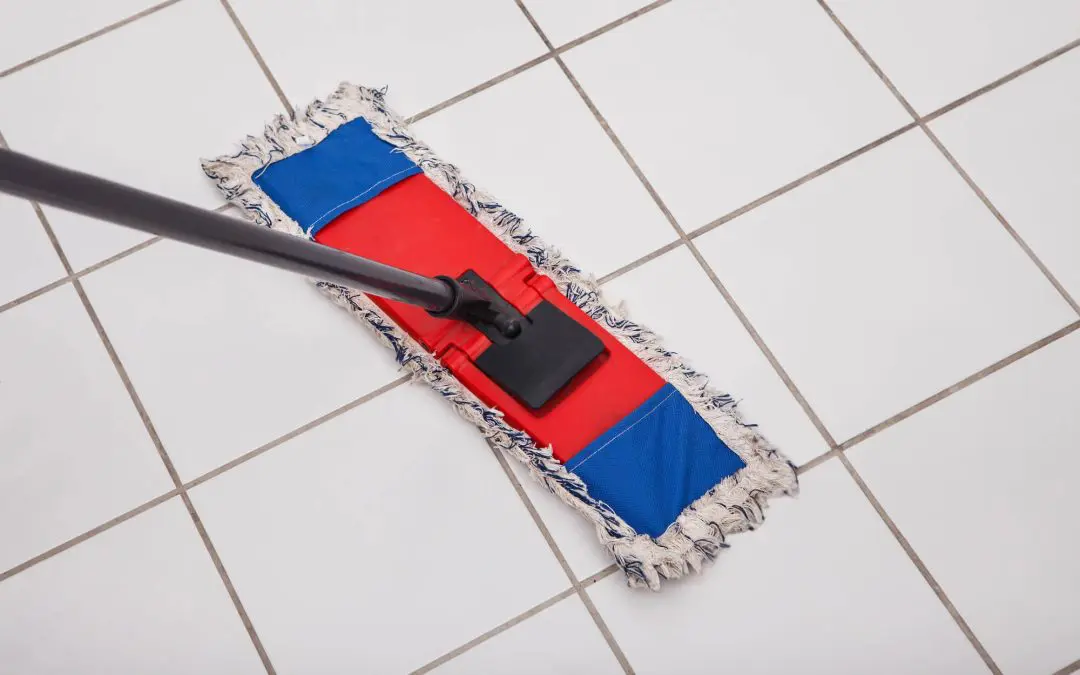Tile flooring is a popular choice for many homeowners because it’s durable, attractive, and relatively easy to maintain. But even the toughest tile floors can start to look dull or grimy if they’re not cleaned properly. Whether you’ve got ceramic, porcelain, or natural stone tile, there are a few simple routines and tricks that can help you keep your floors looking fresh and clean without too much hassle. In this post, we’re going to walk you through some tried-and-true tips for cleaning tile flooring the right way.
Start Cleaning Tile Flooring with a Regular Sweep or Vacuum
The first and most important step in cleaning tile floors is keeping them free of dust, dirt, and grit. These little particles might not seem like a big deal, but over time, they can scratch the surface of your tile or get ground into the grout lines. That’s why it’s a good idea to sweep or vacuum your floors regularly—at least a few times a week.
If you use a vacuum, make sure it’s set to the hard floor setting so it doesn’t damage the surface. And when sweeping, try using a soft-bristle broom that won’t scratch the tile. It’s a simple habit, but it makes a big difference.
Mop with a Mild Cleaner
Once your tile is free of loose dirt, it’s time to mop. Warm water and a mild detergent usually do the trick. You don’t need anything heavy-duty unless you’re dealing with serious stains or buildup. Avoid using anything too harsh or acidic, especially on natural stone tile, since it can damage the surface over time.
A microfiber mop works great for tile because it’s gentle and effective. Be sure to wring it out well before mopping so you’re not soaking the floor. Too much water can seep into the grout and cause problems down the road. After mopping, give the floor some time to dry before walking on it.
Don’t Forget the Grout
Grout tends to be the part of tile flooring that gets the dirtiest—and unfortunately, it’s also the trickiest to clean. Because grout is porous, it can absorb spills and dirt easily, making it look stained or discolored.
If your grout is starting to look grimy, mix a paste of baking soda and water and apply it to the grout lines. Let it sit for a few minutes, then scrub with a toothbrush or grout brush. Rinse with clean water and wipe it down with a damp cloth. For tougher stains, a little white vinegar or hydrogen peroxide can help, but be careful using these on colored grout or natural stone tiles.
Handle Spills Right Away
One of the easiest ways to keep tile looking clean is to handle messes as soon as they happen. Whether it’s a splash of coffee, muddy footprints, or a bit of cooking grease, don’t let it sit too long. The quicker you clean it up, the less likely it is to stain the tile or grout.
Just use a damp cloth or paper towel for most spills. If it’s something sticky or greasy, a drop of dish soap in warm water will help. Make sure to dry the spot afterward so there’s no leftover moisture.
Avoid Common Mistakes When Cleaning Tile Flooring
Some common cleaning habits can actually do more harm than good when it comes to tile floors. Avoid using bleach, ammonia, or anything too abrasive—they can wear down the finish or discolor the grout. Steam mops might seem like a quick fix, but they can force moisture into the grout and cause long-term issues.
Also, don’t use oil-based cleaners or wax on tile. These products might leave the floor looking shiny at first, but they can create a slippery surface and build up over time.
Tile flooring is made to last, but it needs a little care to stay in top shape. Use these techniques to keep it looking clean and beautiful for years to come.
Frequently Asked Questions
How often should I mop my tile floors?
For most homes, mopping once a week is enough. You might want to do it more often if you have kids, pets, or heavy foot traffic.
What’s the best homemade tile floor cleaner?
A simple mix of warm water and a few drops of dish soap works great. For extra shine, you can add a splash of white vinegar, but avoid this on natural stone tile.
Can I use bleach on grout?
It’s best to avoid bleach unless the grout is white and you’ve tested it in a small spot. Bleach can weaken grout and cause discoloration over time.
How do I know if my grout needs sealing?
If water doesn’t bead up on the grout but soaks in instead, it’s probably time to reseal it. Grout sealers usually need to be reapplied every one to two years, depending on usage.
Is it okay to use a steam mop on tile?
Steam mops can clean well, but they may damage grout over time by forcing moisture into it. Stick with traditional mopping if you want to play it safe.
Legacy Property Inspections provides home inspections to customers in Southeast Georgia. Contact us to schedule an appointment.

